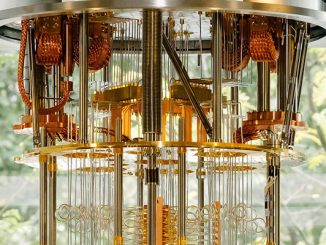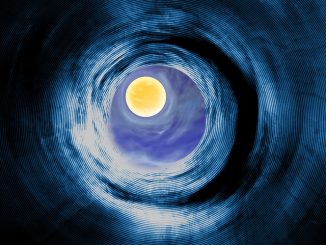
Scientists find it extremely interesting to observe and analyze ultracold molecues because understanding their underlying mechanisms can lead to potential solutions for a number of problems in astrophysics and in the weird world of quantum physics. In particular, ultracold molecules are being eyed as possible quantum simulators, with each molecule representing one quantum bit (qubit) that will store quantum information in a quantum computer.
Building a quantum computer has been considered as the holy grail of quantum physics. And scientists all over the world are racing to be the first to build a fully functioning one. In contrast with today’s conventional computers which store data through bits that represent either 0 or 1, a quantum computer will store data in qubits that can represent 0, 1, or 0 and 1 at the same time through the quantum quirk known as superpositioning – the ability of being in two states at once. This extraordinary capability is what makes a quantum computer a super computer – the ability to perform calculations at unheard speeds. And this is what scientists are hoping to harness soon.
While there are already proven methods for cooling atoms down to nano-Kelvin temperature ranges, all of those methods fail when it comes to molecules because a molecule naturally has a more complex structure than an atom. The more atoms a molecule has, the more intricate its structure, and the more complex its behaviour.
Presently, the almost-universal cooling method being used is laser cooling – a collective term for different techniques that make use of laser to cool down atoms. All these techniques work on the principle that when an object (like an atom) absorbs and releases light (specifically, a particle of light called a photon), its momentum changes.
One type of laser cooling is sisyphus cooling, named after a figure in Greek mythology — Sisyphus — who was doomed to perpetually roll a stone up a hill, only to have it roll down again as soon as he nears the top.
In Sisyphus cooling, the movement of atoms change as the level of their energy changes upon interacting with light. When the atoms go ‘uphill’, they slow down. But as they approach the top of the hill, they are optically pumped towards the bottom of a ‘valley’, which then eliminates the potential energy they are carrying.
By repeating this cycle of converting kinetic energy into potential energy, then losing this potential energy through optical pumping, the atoms are able to reach temperatures lower than those that can be achieved through Doppler cooling – another kind of laser cooling technique that works by trapping and slowing the movement of atoms to cool a material.
Sisyphus cooling has previously been demonstrated effective in cooling atoms. And now, in a remarkable feat, a research team at the MIT-Harvard Center for Ultracold Atoms led by Ivan Kozyryev has successfully used the same process to cool three-atom molecules of strontium monohydroxide. Which is just the beginning. According to Kozyryev, it is possible to extend the technique to molecules with up to 15 atoms. Additionally, Kozyryev says that laser can be used not just to cool atoms, but also to ‘redial their state precisely’.
If scientists are able to figure out how to control which part of the molecule vibrates, the technique can be applied to store information. That can then pave the way for building a molecular-based quantum computer. Although, realistically speaking, that might still be a long way off. But a start is still a start. And in the meantime, scientists can simply study ultracold molecules in further detail to get a better understanding of how they behave and for what other purpose they can best be used for.
Details of the research are described in a paper recently published in the journal Physical Review Letters.
- Bulenox: Get 45% to 91% OFF ... Use Discount Code: UNO
- Risk Our Money Not Yours | Get 50% to 90% OFF ... Use Discount Code: MMBVBKSM
Disclaimer: This page contains affiliate links. If you choose to make a purchase after clicking a link, we may receive a commission at no additional cost to you. Thank you for your support!




Leave a Reply